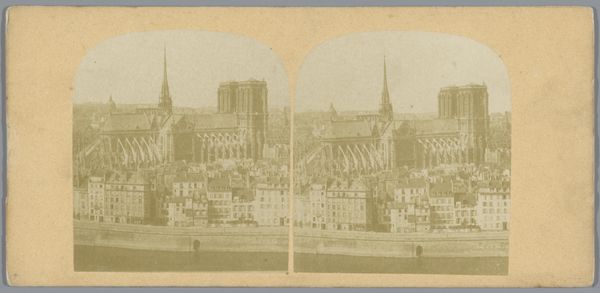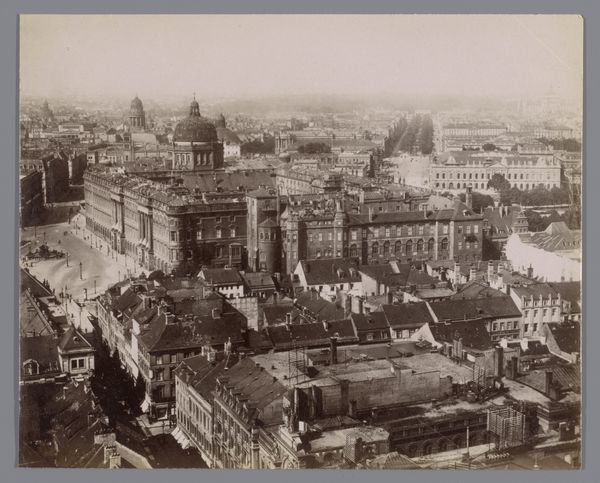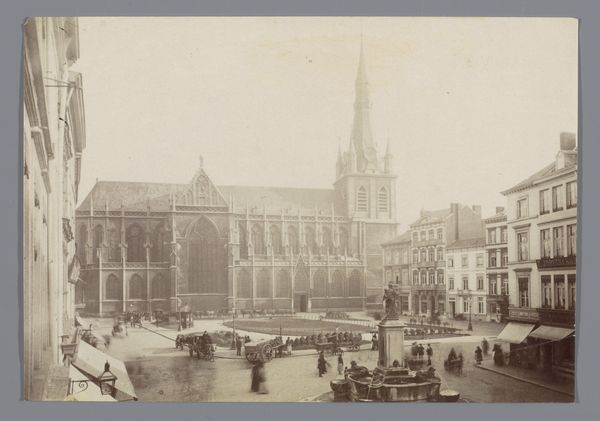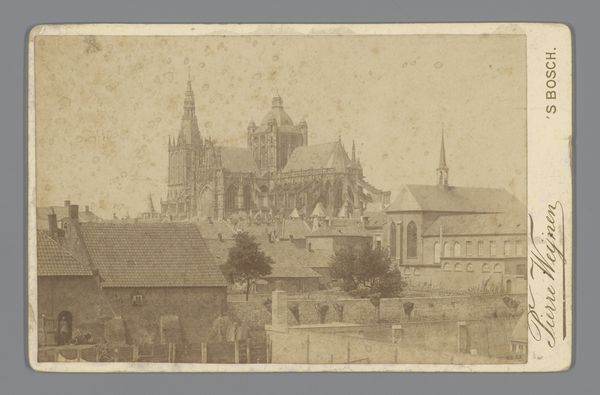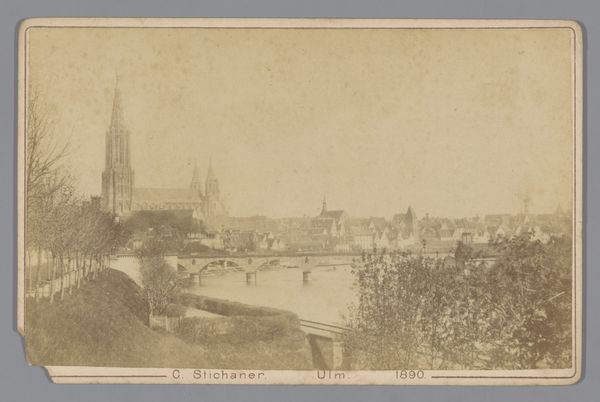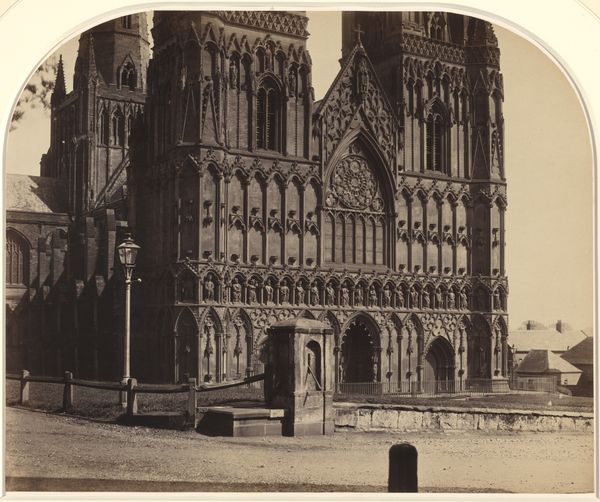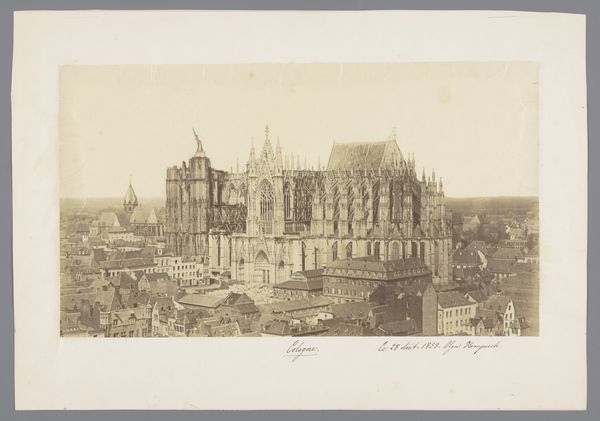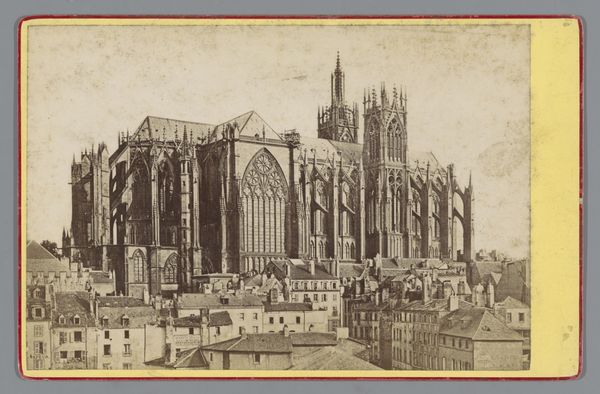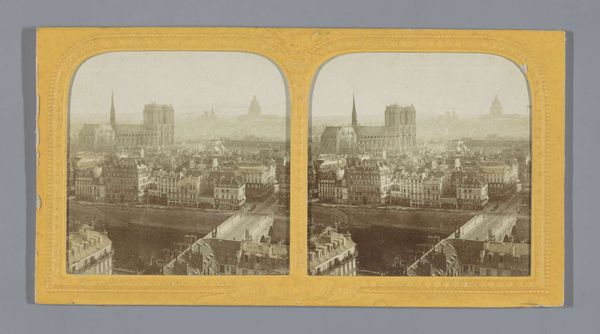
print, daguerreotype, photography, architecture
# print
#
daguerreotype
#
photography
#
19th century
#
cityscape
#
architecture
#
realism
Dimensions: 24.8 x 31.1 cm (9 3/4 x 12 1/4 in. )
Copyright: Public Domain
Edmond Bacot made this photograph of Saint-Ouen in the mid-19th century using the albumen print process. This technique, popular at the time, involved coating paper with egg white and silver nitrate, creating a surface sensitive to light. Look closely, and you'll notice the subtle tonal range. The albumen process yielded prints with a characteristic warm brown hue and a smooth, almost glossy surface. To make this photograph, a glass negative would have been placed on the prepared paper, and then exposed to sunlight, allowing the image to gradually appear. The resulting print captures Saint-Ouen from a high vantage point, emphasizing the cathedral's imposing scale, and the density of the surrounding cityscape. Photography was not yet a fully industrialized process at this stage. Each print involved meticulous hand preparation, making every image a unique artifact of craft, technology, and the artist’s eye. This challenges conventional distinctions between fine art and more traditional forms of making, encouraging us to appreciate the work involved in the production process.
Comments
No comments
Be the first to comment and join the conversation on the ultimate creative platform.
